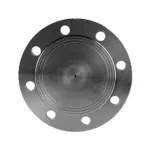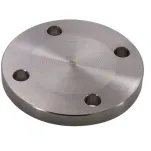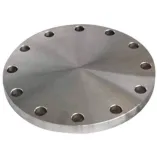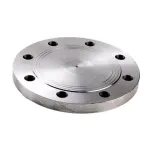-
Cangzhou Yulong Steel Co., Ltd.
-
Phone:
+86 13303177267 -
Email:
admin@ylsteelfittings.com
- English
- Arabic
- Italian
- Spanish
- Portuguese
- German
- kazakh
- Persian
- Greek
- French
- Russian
- Polish
- Thai
- Indonesian
- Vietnamese
- Zulu
- Korean
- Uzbek
- Hindi
- Serbian
- Malay
- Ukrainian
- Gujarati
- Haitian Creole
- hausa
- hawaiian
- Hebrew
- Miao
- Hungarian
- Icelandic
- igbo
- irish
- Japanese
- Javanese
- Kannada
- Khmer
- Rwandese
- Afrikaans
- Albanian
- Amharic
- Armenian
- Azerbaijani
- Basque
- Belarusian
- Bengali
- Bosnian
- Bulgarian
- Catalan
- Cebuano
- China
- China (Taiwan)
- Corsican
- Croatian
- Czech
- Danish
- Esperanto
- Estonian
- Finnish
- Frisian
- Galician
- Georgian
- Kurdish
- Kyrgyz
- Lao
- Latin
- Latvian
- Lithuanian
- Luxembourgish
- Macedonian
- Malgashi
- Malayalam
- Maltese
- Maori
- Marathi
- Mongolian
- Myanmar
- Nepali
- Norwegian
- Norwegian
- Occitan
- Pashto
- Dutch
- Punjabi
- Romanian
- Samoan
- Scottish Gaelic
- Sesotho
- Shona
- Sindhi
- Sinhala
- Slovak
- Slovenian
- Somali
- Sundanese
- Swahili
- Swedish
- Tagalog
- Tajik
- Tamil
- Tatar
- Telugu
- Turkish
- Turkmen
- Urdu
- Uighur
- Welsh
- Bantu
- Yiddish
- Yoruba

Oct . 22, 2024 18:56 Back to list
Blind Flange Types and DIN 2527 Blind Flange
Blind flanges are a critical component in various piping systems, designed to close off the ends of pipes, valves, or pressure vessels. Unlike other flanges, blind flanges are solid plates with no opening in the center, used for sealing the end of a pipe. This allows for future access or modifications to the piping system without needing to dismantle it entirely.
Among the many types of blind flanges, the DIN 2527 blind flange is one of the most commonly used, especially in applications adhering to German and international standards. Understanding the different types of blind flanges, particularly the DIN 2527 blind flange, can help you choose the right option for your project.
Types of Blind Flanges
Raised Face (RF) Blind Flange
- Overview: The most commonly used type of blind flange, it features a raised face around the bore. This raised surface provides additional surface area for gaskets, enhancing sealing performance under high-pressure conditions.
- Applications: Ideal for high-pressure systems in industries such as oil and gas, chemical processing, and power generation.
- Advantages: Ensures a tight, leak-proof connection, making it suitable for demanding applications.
Flat Face (FF) Blind Flange
- Overview: Flat face blind flanges have a smooth, flat surface and are typically used when the mating flange or fitting is also flat. This prevents any bending forces that could arise from uneven pressure distribution.
- Applications: Common in low-pressure systems such as water treatment plants or certain chemical processes.
- Advantages: Reduces the risk of overstressing or damaging the connecting components in low-pressure applications.
Ring-Type Joint (RTJ) Blind Flange
- Overview: Designed with a groove cut into the face where a metal ring gasket is seated, the RTJ blind flange is used in high-pressure, high-temperature applications where tight seals are critical.
- Applications: Primarily used in oil and gas systems, petrochemical industries, and refineries.
- Advantages: Provides excellent leak prevention, even in extreme environments.
Threaded Blind Flange
- Overview: Unlike most blind flanges that are welded onto the pipe, threaded blind flanges are screwed into threaded pipe ends. This design makes them easy to install or remove without welding.
- Applications: Ideal for low-pressure systems or situations where welding is not possible, such as in explosive environments.
- Advantages: Quick installation and disassembly, making them ideal for temporary piping setups.
DIN 2527 Blind Flange
The DIN 2527 blind flange follows the standards set by the German Institute for Standardization (DIN). It is used to seal the end of a pipeline, preventing fluid or gas from passing through while allowing future access if needed. This flange is commonly used in a wide range of industries, including oil and gas, chemical processing, water treatment, and more.
- Material: DIN 2527 blind flanges are made from a variety of materials, including carbon steel, stainless steel, alloy steel, and other materials depending on the requirements of the application.
- Pressure Ratings: These flanges are available in multiple pressure ratings, ranging from PN6 to PN40, indicating the pressure they can withstand in bars.
- Sizes: DIN 2527 blind flanges are produced in sizes ranging from DN10 to DN2000, suitable for small to large pipelines.
Choosing the Right DIN 2527 Blind Flange
When selecting a DIN 2527 blind flange for your project, consider the following factors:
Pressure Rating: Ensure that the flange can withstand the maximum pressure in your system. Higher pressure ratings are required for systems handling pressurized gas or liquids.
Material: The material of the flange should be compatible with the media being transported in the pipeline. For example, corrosive materials may require stainless steel or other corrosion-resistant materials.
Gasket Compatibility: Depending on the flange type, you may need a compatible gasket (such as a ring-type joint or flat gasket) to ensure a leak-proof seal.
Size and Dimensions: Ensure that the flange matches the pipe’s size and follows the DIN 2527 standard for accurate fit and reliable performance.
Finding a Reliable Blind Flange Supplier
If you're looking for blind flange suppliers, it's crucial to choose a manufacturer with a reputation for delivering high-quality products that meet international standards. Here are some tips for finding the right supplier:
- Certification: Look for suppliers who comply with DIN standards and other international certifications like ISO, EN, or ASME.
- Experience: An experienced manufacturer will have a proven track record of delivering high-quality flanges suitable for various industries and applications.
- Customization Options: If your project has specific requirements, such as non-standard sizes or materials, choose a supplier that offers custom manufacturing services.
- Cost and Delivery: Consider suppliers that offer competitive pricing and can meet your delivery timelines to avoid project delays.
Blind flanges, including the DIN 2527 blind flange, play an essential role in sealing the ends of pipelines and providing future access for system modifications. Understanding the various types of blind flanges, along with their applications, helps in choosing the right flange for your project. When working with a reputable blind flange supplier, ensure they meet your material, size, and pressure requirements for optimal performance and safety in your system.
Latest news
-
ANSI 150P SS304 SO FLANGE
NewsFeb.14,2025
-
ASTM A333GR6 STEEL PIPE
NewsJan.20,2025
-
ANSI B16.5 WELDING NECK FLANGE
NewsJan.15,2026
-
ANSI B16.5 SLIP-ON FLANGE
NewsApr.19,2024
-
SABS 1123 FLANGE
NewsJan.15,2025
-
DIN86044 PLATE FLANGE
NewsApr.19,2024
-
DIN2527 BLIND FLANGE
NewsApr.12,2024
-
JIS B2311 Butt-Welding Fittings LR/SR 45°/90° /180°Seamless/Weld
NewsApr.23,2024















